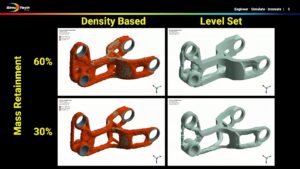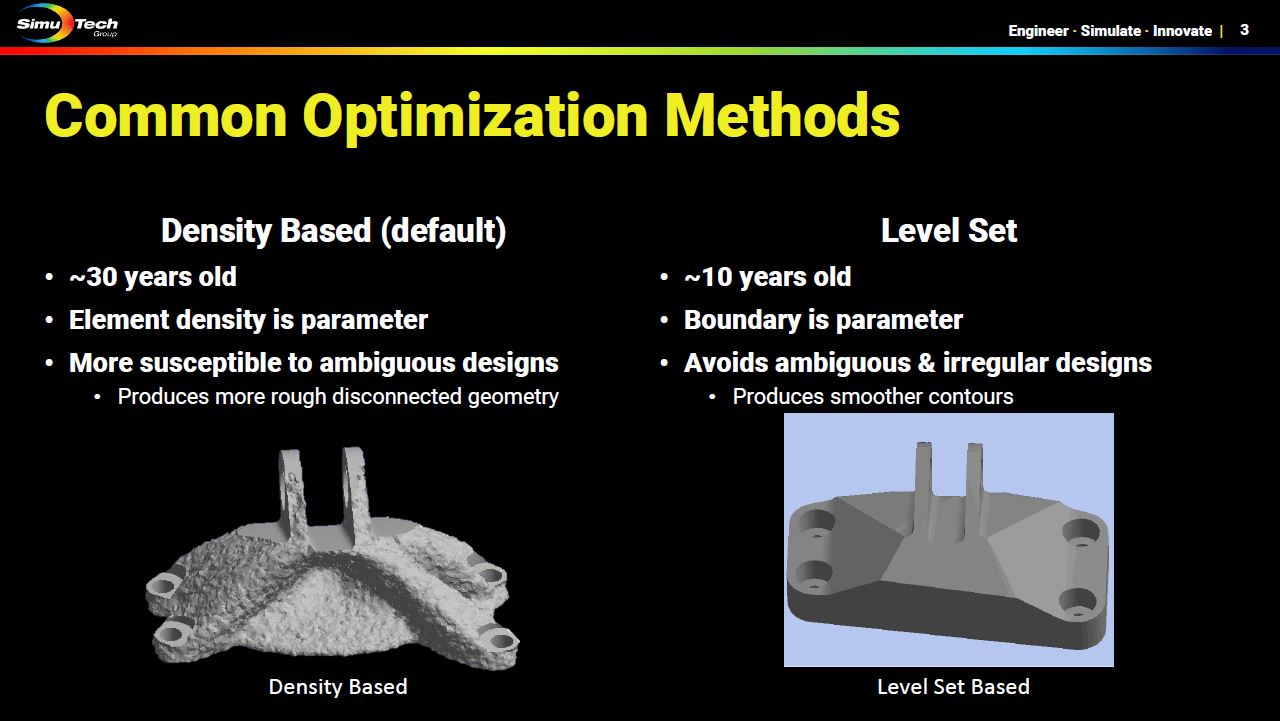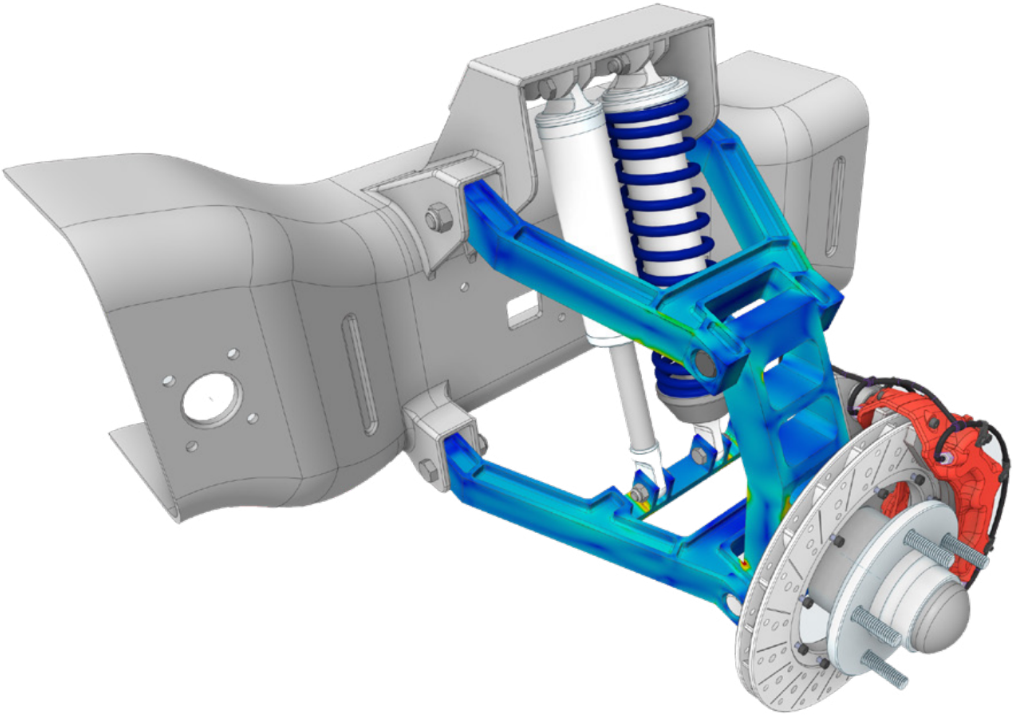Mass Reduction in Ansys | Webinar Description:
This tips and tricks webinar demonstrates how to use structural (formerly topology) optimization to for practical purposes relating to mass reduction in Ansys.
This quick-hitting webinar features a brief overview of the two most common optimization methods in Ansys Mechanical, density-based & level set, followed by a live demo walkthrough.
Our expert engineer will highlight the latest enhancement allowing users to view stress and deformation results on their optimized designs without having to reverse engineer and perform a design validation analysis.
Want to learn more about Ansys Mechanical Simulation Software?
Check out this article | Benefits of Ansys Mechanical


Structural Techniques for Mass Reduction in Ansys
Massive increases in rigidity and bulk reduction clearly outperform traditional design approaches.
TopOpt’s Mass Reduction Method
The ideal material distribution in a predetermined design space is automatically determined through topology optimization. This is illustrated by illustrating the potential for improvement in traditionally built cast structures using an existing centerless grinding machine as an example. It was necessary to lower the mass from the current building by a third.
Mechanical Mass Reduction & Structural Solutions
In both parts, the bulk might be reduced by about a third when compared to carriages of more traditional design. However, depending on the load scenario, stiffness improved by 80 to 675% (measured at the bearing shells).
How Clients Benefit from Mass Reduction Adoption
Castable structures can be developed whose molding box can be made, for instance, on a CNC milling machine, by restricting the optimization to observe the pertinent manufacturing limits. Massive increases in rigidity and bulk reduction clearly outperform traditional design approaches.
Additional Ansys Software Tips & Tricks Resources
-
- Analyzing normal and Tangential Elastic Foundations in Mechanical
- Why Meshing is Crucial for FEA Fluid Simulations Prior to Prototyping
- For support on Contained Fluid FEA Modeling with HSFLD242 Elements
- For Exporting a Deformed Geometry Shape Post-Analysis in Mechanical
- Moreover, for guidance Multi-Step Analyses in Mechanical
- For Retrieving Beam Reaction Force in a Random Vibration Analysis
- Deploying Ansys Macro Programming vis *USE Command in Mechanical
- For replicating Fatigue Models from Start to Finish in Mechanical
- In addition, setting up Acoustic Simulations of a Silencer
- For a step-by-step guide on 2D to 3D Submodeling in Mechanical
- For modeling Pipe16 Circumferential Stress in Mechanical
- For Support on performing ‘EKILL‘ in Workbench
- APDL Command Objects post-Spectral Analysis
- For Separating DB Database Files from RST Files
- Measuring Geometric Rotation in Mechanical WB
- Explicitly, CAD Geometry Deformation Plasticity
- Offsetting a Temperature Result to Degrees Absolute
- For general guidance on Ansys Post-Processing
- Finally, for basic Ansys Software Installation and License Manager Updates






